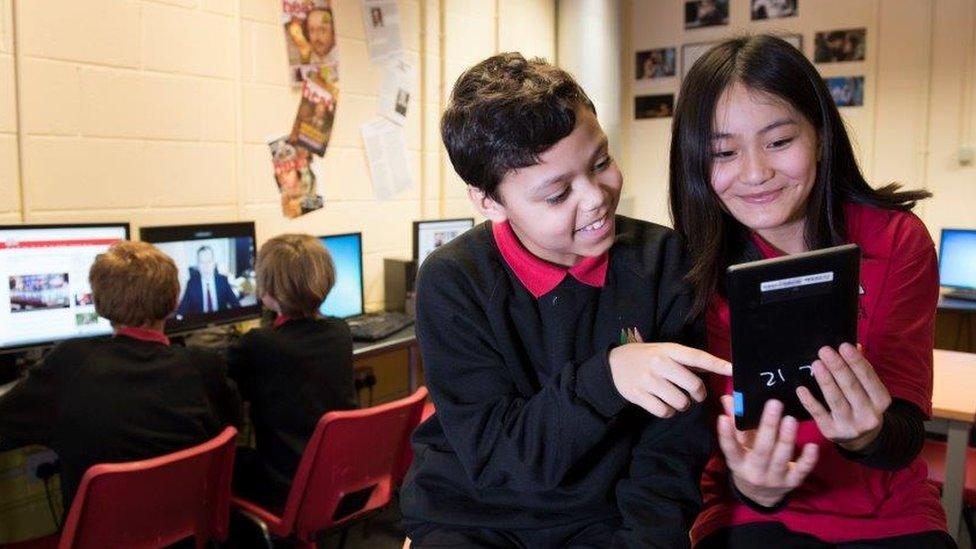BBC game challenges young people to spot "fake news"
- Published

The iReporter game can be used by pupils in lessons and complements English and citizenship
UPDATE 7 November 2024: The BBC iReporter interactive game is no longer available. Other media literacy resources for schools and young people can be found on the BBC Teach website.
Can you separate the fact from the fiction?
The new interactive BBC iReporter game - aimed at youngsters aged 11 to 18 - gives you the chance to take on the role of a journalist in the BBC newsroom.
It is a "choose your own adventure" game, created by Aardman Animations, which challenges you to make your own decisions on which sources, political claims, social media comments and pictures should be trusted as you contribute to the day's news output.
The game is part of a BBC initiative to help young people identify false stories by giving students and teachers resources to use in classrooms across the UK.
An introduction to different types of fake and false information
The resources also look at the issues of trust. In an era when people get their information from a much wider range of sources, how do young people gain confidence in deciding what they should trust?
Hints and tips on how to spot false information on social media and online are included, as well as lesson plans for teachers to use in school.
A guide to help you decide which sources to trust and which not to
The BBC has also teamed up with the Centre for Argument Technology at the University of Dundee to create the "Evidence Toolkit", external - a programme aimed at 16-to-18-year-olds.
It combines complex algorithms and archive material from BBC Radio 4's Moral Maze, external to help students identify the claims made and the reasoning in any news article and how the two are connected.
If you want to be sure a story is right, check the evidence.
Professor Chris Reed, director of the centre, said: "Dissecting news articles to determine their anatomy and figure out how they're working is a delicate business.
"The Evidence Toolkit equips users with a set of razor-sharp tools to go about it."
John Lawrence, lead developer on the project, explained: "The Toolkit employs state-of-the-art artificial intelligence techniques for argument mining. This is the first time AI has been unleashed on understanding the reasoning in news articles."

BBC editor's top tips
Amol Rajan is the BBC's media editor and was previously editor of the Independent newspaper.
Let me tell you how I decide whether or not I can trust a news source. First of all, have they shown a commitment to accuracy over a long period of time? Have they consistently got things right?
And the second thing - which is related - is: do they admit when they get things wrong? You know, if you put your hand up and say 'Sorry, I made an error, there were factual mistakes in the piece that we published', then people like me are much more likely to believe you when you say another time that you got things right.

Numbers are often used to tell all sorts of stories too. They can help show the scale of a particular problem or issue, illustrating whether it's big or small.
In this short animation you'll learn how just because a number looks big doesn't mean it really is and that a really small number might turn out to be much bigger than it first appears.
When looking at news stories remember to take a close look at what the numbers are doing
A BBC Live Lesson, external on sorting fact from fiction aimed at pupils aged 11 to 14 and complements both citizenship and English school curriculums is also available is also available to watch online here.
Presented by BBC Breakfast's Naga Munchetty, who will introduce experts from HuffPost UK, external and the independent fact-checking organisation Full Fact. , external
All the more online resources and lessons plans are available for teachers and educators.